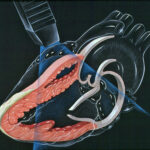Sports injuries interrupt routines, disrupt identity, and alter daily life. A sprained ankle, a torn ligament, or a fracture changes training loads, sleep patterns, and social contact. For athletes and active people, these changes may trigger stress, self-doubt, and frustration. Here is how the psychological impact helps you spot patterns, respond early, and work with a plan that supports both body and mind:
Depression & Anxiety
After a sports injury, you may experience symptoms such as low energy, loss of interest in training, sudden changes in sleep patterns, or overwhelming worries. This psychological impact occurs because sudden loss, pain, and uncertainty can lead to significant changes in mental health. Some athletes dwell on the injury, replaying the event at night, while others may suppress their feelings, which can lead to irritability.
Using short screening tools can help monitor your mood over time. Establishing a routine with brief check-ins, breathing exercises, and scheduled social interactions can promote stability. If negative thoughts persist or daily functioning declines, consult a licensed clinician for an assessment.
Impact on Recovery
Injury affects behavior, which in turn influences the healing process, and the healing process impacts your mindset. Guidance from a professional can make a big difference after sports injuries. Consistent sleep may increase pain tolerance, and staying hydrated may help reduce inflammation. Maintaining steady nutrition may also help keep your energy levels stable.
There are also more complex factors involved, such as fear of movement. This can cause you to adopt guarded patterns that slow down your strength gains. You might notice avoidance during rehab exercises that feel risky, which is typical after knee or shoulder injuries.
To stay on track, set small, clear goals with your clinician and connect each rehab task to a specific purpose. Keep a log of pain levels, range of motion, and training minutes so that fluctuations can be used as valid data. Here are two practical steps to help many athletes manage uncertainty:
- Use brief, repeatable cues during exercises to help focus your attention.
- Schedule rest days ahead of time so that rest is intentional, not like giving up.
Progress may feel uneven at times, but committing to regular review points can keep your decisions grounded and your recovery on track.
Return to Sports
A return-to-play plan combines physical benchmarks with psychological readiness to help reduce guesswork. It begins with medical clearance and objective assessments, such as strength ratios, hop tests, or balance scores. Then, it progresses through a series of graded exposures. Simple checklists clarify the athlete’s readiness, while realistic practice scenarios may also help.
Some athletes may hesitate to return to activities due to fear of re-injury. This can benefit from clear roles for the athlete, coach, or podiatrist. A pre-performance routine, such as breathing exercises, cue words, and a first action, may help shift focus from fear to the task.
Get Treated for Sports Injuries
Effective care addresses pain, function, and mental health together. You might start with an evaluation to identify tissue damage, movement limits, and red flags. Watch for warning signs: sleep disruption that lasts, persistent dread before sessions, avoidance of team settings, or thoughts that injury defines you. Prompt attention limits secondary setbacks. Schedule an appointment with a podiatrist, ask about integrated mental health support, and set your first review date. Your recovery has many parts, and a structured plan puts them in one place.









Leave a Reply